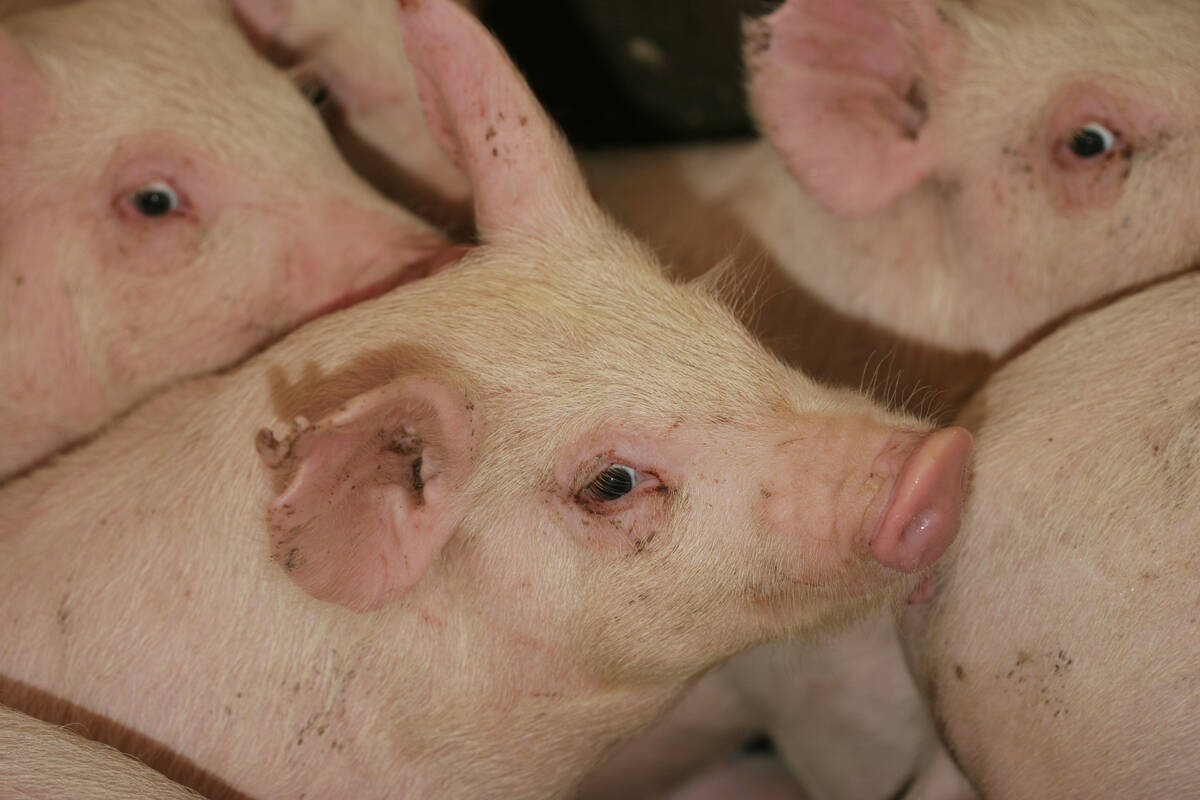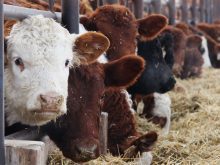RED DEER – As more people move away from the farm a cultural confusion has developed over the role of animals as pets or meat.
The divide may continue to widen as urbanites look at animal welfare as an ethical question while agriculture continues to credit science with the advances made in livestock care.
“We define everything we do with science,” said Earl Dotson at the recent Alberta Farm Animal Care conference in Red Deer.
“Agriculture is looking for technological and scientific answers,” he said.
Read Also

The Western Producer Livestock Report – September 25, 2025
The U.S. national live price average for barrows and gilts was $81.21 Sept. 17. It was $78.37 Sept. 9. U.S. hogs averaged $106.71 on a carcass basis Sept. 17, up from $106.10 Sept. 9.
Dotson heads the private farm audit firm Validus, one of whose largest clients is the United Egg Producers in the United States.
His company inspects and validates egg farms for welfare standards as outlined by the organization.
North Americans are not only concerned about where their food came from but how the environment, animals and farm workers were treated. Because Americans spend such a small portion of their income on food, they have the time and money to make such demands.
A turning point in the U.S. came with the Arizona ban on sow and veal crates by 2013 in a vote known as proposition 204. Six other states may present similar propositions to the voters in the next election. The pork companies Smithfield Foods and Maple Leaf Foods also announced they are phasing out stalls within 10 years.
One of the problems before the Arizona vote involved reporters asking to see sow crates. They were refused entry because farmers cited biosecurity concerns. That made people suspicious.
Science can defend the use of crates but that made no difference in the outcome. People feel it is an ethical question of whether animals have enough space to turn around.
“Ethics are not about science. It’s about what is right in somebody’s mind. That is a huge divergence from science,” Dotson said.
Consumers are not interested in science or production practices. They want a story where they learn the animals were well treated.
Social pressures are making a difference and consumers will accept third party audits that indicate an open system making continuous improvement. That means doing the right thing every day, not just when the auditor is there.
Consumers also say government should enforce regulations to guard animal welfare.
More retailers are contracting companies like Dotson’s for audits because they want to protect their brands. McDonalds Corp., Burger King, KFC and Safeway have come under attack for using suppliers that animal rights groups deemed cruel to livestock and poultry, so the companies acted.
Most people, including producers, think animal care could be improved and most still want animal based products, said Ray Stricklin of the animal science department of the University of Maryland.
“The public still wants the product, but they want products from an animal that has experienced a reasonable quality of life,” he said.
One way to tell the story of agriculture and how animals are treated is through livestock shows, said Jeff Goodwin, director of 4-H development at Colorado State University.
For the last 14 years he has taught livestock show ethics with education sessions and videos. Many states and provinces use his guidelines. The result is the promotion of livestock show ethics that includes common sense.
“Listen to your conscience and use your head when you work with animals,” said Goodwin.
The situation came to a head in the early 1990s when there were problems with livestock fitters injecting air under the hide of show steers.
Illegal drug residues in show animals were detected at U.S. livestock shows, including youth events with large cash prizes. These practices harmed the animals and did nothing to teach young people about animal use and fair play.
A 1990 survey of livestock participants associated with one major show revealed 7.9 percent gave steroids to their animals, 42.5 percent gave tranquilizers, 24.8 percent gave diuretics, 25 percent gave illegal drugs and 37.5 percent falsified registration papers.
Drug testing has been introduced and anyone violating the rule is banned from future shows.















